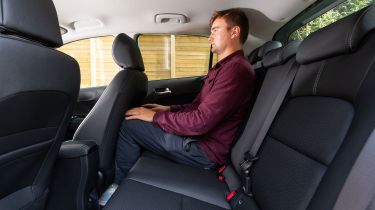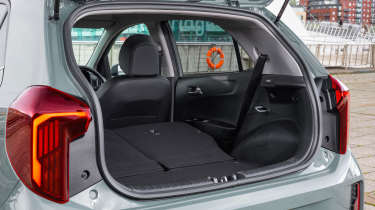Kia Picanto review - Practicality & boot space
The impressively practical Picanto makes the most of its small size
There’s only so much that Kia can do in practicality terms with a car that occupies a patch of road as small as the Picanto, and the previous generation was never the most accommodating small car. Nevertheless, the latest model offers a far more versatile interior than before, without being any bigger on the outside.
Kia Picanto interior space & storage
Compared to the previous generation, the front and rear wheels were pushed right out to the car’s corners, and this has had a noticeable effect on interior space. Those in the front enjoy a lot more space around their legs, helped by the lower edge of the dashboard being raised by 15mm. It’s disappointing that there’s no height adjustment for the driver’s seat on the cheapest trim level, but a comfortable driving position is still easily obtained. All-round visibility is very good, too.
Rear-seat passengers can recline in surprising comfort, thanks to the angle of the rear seatback. The increase in wheelbase has had a really positive effect on passenger legroom – although it’s still snug for four adults it no longer feels like punishment, and two six-foot-tall adults can even fit in the back.
There’s a decent amount of interior storage space, too, with a centre compartment that can take a one-litre water bottle, shelves at the base of the centre console and a pair of cup-holders that can be retracted when not in use.
Boot space
Despite the passenger compartment growing, Kia has still managed to give the latest Picanto a decent boot. Its 255-litre capacity beats most rivals and can challenge some cars in the next category up. It’s more impressive than the 231 litres offered in the Toyota Aygo X, and far more than you’ll find in the electric Fiat 500, which has just 185 litres of luggage space. Fold down the rear seats, and there’s 1,010 litres of space in the Picanto, which should easily accommodate holiday luggage for two people.
















